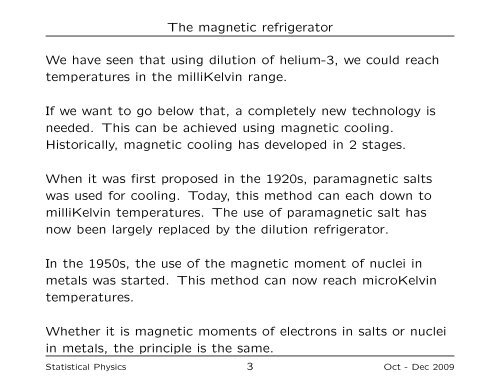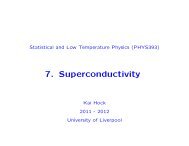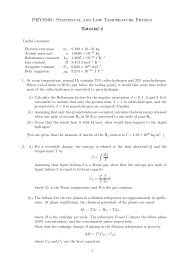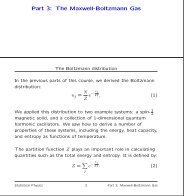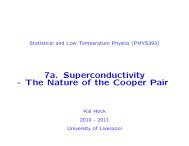Statistical and Low Temperature Physics - University of Liverpool
Statistical and Low Temperature Physics - University of Liverpool
Statistical and Low Temperature Physics - University of Liverpool
You also want an ePaper? Increase the reach of your titles
YUMPU automatically turns print PDFs into web optimized ePapers that Google loves.
The magnetic refrigerator<br />
We have seen that using dilution <strong>of</strong> helium-3, we could reach<br />
temperatures in the milliKelvin range.<br />
If we want to go below that, a completely new technology is<br />
needed. This can be achieved using magnetic cooling.<br />
Historically, magnetic cooling has developed in 2 stages.<br />
When it was first proposed in the 1920s, paramagnetic salts<br />
was used for cooling. Today, this method can each down to<br />
milliKelvin temperatures. The use <strong>of</strong> paramagnetic salt has<br />
now been largely replaced by the dilution refrigerator.<br />
In the 1950s, the use <strong>of</strong> the magnetic moment <strong>of</strong> nuclei in<br />
metals was started. This method can now reach microKelvin<br />
temperatures.<br />
Whether it is magnetic moments <strong>of</strong> electrons in salts or nuclei<br />
in metals, the principle is the same.<br />
<strong>Statistical</strong> <strong>Physics</strong> 3 Oct - Dec 2009


